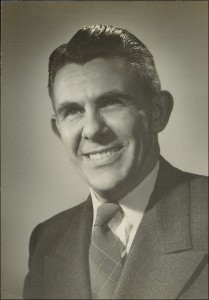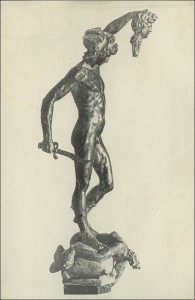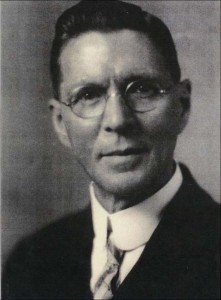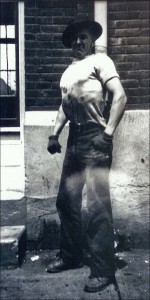The Academic Craftsman
The Academic Craftsman
My father, Donald Lyman Mason, was a consummate craftsman, easily the best all-around craftsman I have known in my life. The story of how he got to be that way is interesting. He was about eight years old when his father, Ralph Leslie Mason, perished (click here). His mother, Nellie Harriet (Sly) Mason, took his older sister and moved from Minnesota to Eugene, Oregon to live with her parents. Dad was left with his paternal grandparents for about a year while my grandmother got settled in Eugene. My great grandfather, William Merrill Mason, was a general contractor and was very much of the old school in his approach to his occupation. He had a large assortment of tools which he used in his trade, and which he meticulously maintained. My father was very interested in all those tools and wanted to learn to use them, but great grandfather was not about to let an eight year old boy mess with his tools. You had to serve an apprenticeship first, and eight or nine years old was just too young for that. This so frustrated my father that when he eventually did get access to tools, he went all-out and proved to be a virtuoso. The eventual result was he became a professor of industrial arts, first at Oregon State University (College) and later at Standford University.
Dad didn’t just know how to use tools and how to build beautiful things (see a few examples here), in most cases he could tell you the history of each type of tool, why it was invented, who invented it and how it had evolved since then. This academic approach is something he may have inherited from his father who was, in fact, a professor. Dad kept a copy of The Autobiography of Benvenuto Cellini. This is a book written in the 1500s, and while admitting that Cellini himself was something of a scoundrel, he nevertheless admired his craftsmanship as a metal smith. Toward the end of the book there is a detailed description of how Cellini cast the huge bronze sculpture called Perseus with Medusa’s Head. Dad used to cite that passage as an example of the history of foundry practice.
Backing up a bit, circa 1920 my grandmother found a job in Eugene as secretary to the president of the University of Oregon and Dad joined the extended family there. In his maternal grandfather, Chester W. Sly, Dad found a more tolerant personality, and one who also had an extensive collection of tools. Chester was a butter maker by trade, but he learned his trade in college. He was a graduate of Lawrence University in Wisconsin back in the days when trades were still taught at the college level. This also may have contributed to Dad’s academic approach since Chester became his new mentor. A number of Chester’s tools are now in my possession and I know this because he stamped “Sly” into his tools with a center punch. It’s a nice short name for that kind of thing. It is, by counting from Chester, that my daughter is a fifth generation college graduate.
Dad graduated from Oregon State in 1936(?) while the Great Depression was in full force. However, he and two other top students, Asa Robly and Russ Jenkins, were hired by the University as teaching assistants. There were no other jobs to be had so they stayed in academia. Asa’s subject was welding and fabrication, Russ was a machinist, and Dad taught foundry. The three of them were good friends. After several years Asa took a position at Stanford teaching his specialty and shortly thereafter he wrote Dad saying, “They need someone here to teach foundry.” One thing led to another and in 1942 just after the start of WWII we moved to Palo Alto, California. One of the good things about Dad’s involvement with the industrial arts curriculum is that it earned him a “Critical Industry Deferment” from the draft for the duration of the war. During 1944 and 1945, while I was starting grade school, I was considered lucky because I had a dad at home. Most of the other kids’ fathers were off fighting somewhere.
Here is another little story that illustrates Dad’s reputation as a superb craftsman. In 1956 I enrolled at Oregon State to follow in Dads footsteps. I majored in industrial engineering and in those days that involved taking many shop courses. When it came time for me to take machine shop I introduced myself to Russ Jenkins who was still on the faculty and, by then, was a full professor. On the first day of class a young teaching assistant (TA) gave a lecture on how to sharpen a tool bit for a metal lathe. He then gave each student a piece of tool bit stock and sent them off to a long row of grinders along one wall of the shop to create a tool bit. After a short time the TA started down the row giving a critique to each student. It was, “A little more here,” “A bit more there,” ” This angle is not quite right,” — that kind of thing. By the time he reached me I was finished. I handed him my bit and and he scrutinized it. Then he looked at me and said, “You’ve done this before.” “Actually, I haven’t, but your lecture was quite clear,” was my truthful reply. Just then Professor Jenkins walked by and the TA turned to him and said, “Look at this, and he says he has never done this before!” Professor Jenkins took the bit, looked it over, then he looked up at me.”Oh!” he said, “That’s Don Mason’s son. He’ll probably do everything right.”
Right then and there I knew that I must ace this course. It was imperative. Nothing less than an “A” would do. All the other courses in my curriculum became secondary while I focused on machine shop. I am happy to report that it worked and I got my “A.” In fact, I got an “A” in all the shop courses largely because I arrived way ahead of the game.
At any rate that is the kind of father that my sister, Irene Joyce (Mason) Jenkins, and I grew up with. Dad made sure we each had our own workbench in his home shop. To this day, if you hand my sister any kind of tool (hand tool or power tool), even if she has never used it before, she will handle it with a natural competence. When it comes to tool country we are natives!
One last little story to cap off this tale. Somewhere around 1960, plus or minus a few years, Dad decided to build a wall along one side of the property in Palo Alto. It would run the length of the property (150 feet), be built of colored concrete blocks and have an ornate element to it. Because it was built by Dad, it is still there fifty-plus years later. It is still as strong and straight and true as ever, although the color is a little faded. One day while he was finishing this project out near the sidewalk at the front of the property a little old lady came stumping along using a cane. She stopped for a while to watch and they smiled at each other. Finally the lady said,
“A thing of beauty is a joy forever:”
This is the first line of a poem by John Keats and one of a number that Dad had committed to memory. Dad stopped what he was doing, turned to the little old lady and replied,
“Its loveliness increases; it will never”
She continued,
“Pass into nothingness; but still will keep”
He replied,
“A bower quiet for us, and a sleep . . .”
I am not certain they got through the whole poem, it is lengthy, but there was a true meeting of the minds. Later, when Dad came in for dinner, he was still smiling broadly and chuckling to himself. As we sat down for dinner Mom said, “What are you so pleased about?” and he related what had just happened. It gives you just one more view of my remarkable father.
Here is a tale about the master craftsman from daughter Irene: “We have
three sons and when the first two David and Robert were born my Daddy
(he always wanted to be called Daddy) took them to his workshop and put
sawdust in their shoe. That, he said, “will make them a good craftsman”
and so it did in the fields that they pursue, Biotech and IT. He died just
before our third son Andrew was born so my husband Don and I took Andrew
to his workshop and put saw dust in his shoe. Andrew is the one who is
especially good with his hands at building almost anything; it is
like a soul transfer with my fathers words echoing down ‘If it is worth
doing, it is worth doing right’. Andrew is a contractor and works in
the San Diego area.
AJ Built Construction, ajbuilt@gmail.com
Robert also has a love of working with wood and is fixing his garage at his new home with a large workbench. His IT WiFi co. website is (http://www.skywavebroadbadn.net)”
Categories
- THE GALLERY
- Uncle Rob's Art
- 3D Works (stills) I
- 3D Works (stills) II
- 3D Works (stills) III
- 3D Works (video)
- Design & Abstract I
- Design & Abstract II
- Design & Abstract III
- Figurative Works I
- Figurative Works II
- Landscapes I
- Landscapes II
- Largest Art Project
- Nautical and Marine Images (video)
- Nautical and Marine Images I
- Nautical and Marine Images II
- Nautical and Marine Images III
- Nautical and Marine Images IV
- Portraits
- Still Life Images
- Stump Hollow Photo Essay I
- Stump Hollow Photo Essay II
- Uncle Rob's Mendocino Shop
- The Five Sense Series
- Irene's Creations
- Works by Don Mason
- Works by Don Mason II
- Works by Joseph de Borde
- Painting by Albert Robbins
- Art by Leslie Masters Villani
- Paintings by Nellie Harriet Parker
- The Art of Bee Yearian
- Works by Evie Wilson
- Uncle Rob's Art
- SCHOONER MOON BOOKS
- SEA STORIES
- ONE DOZEN AND TWO ESSAYS
- Cousinhood
- Art by Definition
- Cake Mixed Economy
- Marriage Anyone?
- Sex and/or Violence
- Searching for Truth
- The Philosophical Roots of Science
- Stepping Stones and Stumbling Blocks
- On Being Good
- Teaching By Example
- The Basic Law of Civilization
- Where Goeth Evil?
- A Modern Empircal "Religion"
- Knowledge as Wealth
- PAPERS AND ARTICLES
- FAMILY STORIES
- BOOK REVIEWS
Archive
- December 2021
- October 2020
- June 2020
- September 2019
- July 2017
- March 2017
- December 2016
- November 2016
- October 2016
- August 2016
- July 2016
- June 2016
- May 2016
- March 2016
- February 2016
- February 2015
- January 2015
- February 2014
- December 2013
- November 2013
- August 2013
- June 2013
- August 2012
- July 2012
- April 2012
- March 2012
- February 2012
- November 2011
- September 2011
- June 2011
- May 2011
- April 2011
- March 2011
- February 2011
- January 2011
- December 2010
- November 2010
- October 2010
- September 2010
- August 2010
- July 2010
- June 2010
- May 2010
- April 2010
- March 2010
- February 2010
- January 2010
- December 2009
- November 2009
- October 2009
- September 2009
- August 2009
- July 2009
- June 2009
- May 2009
- April 2009
- March 2009
- February 2009
- January 2009
- December 2008
- November 2008
- October 2008
- September 2008



